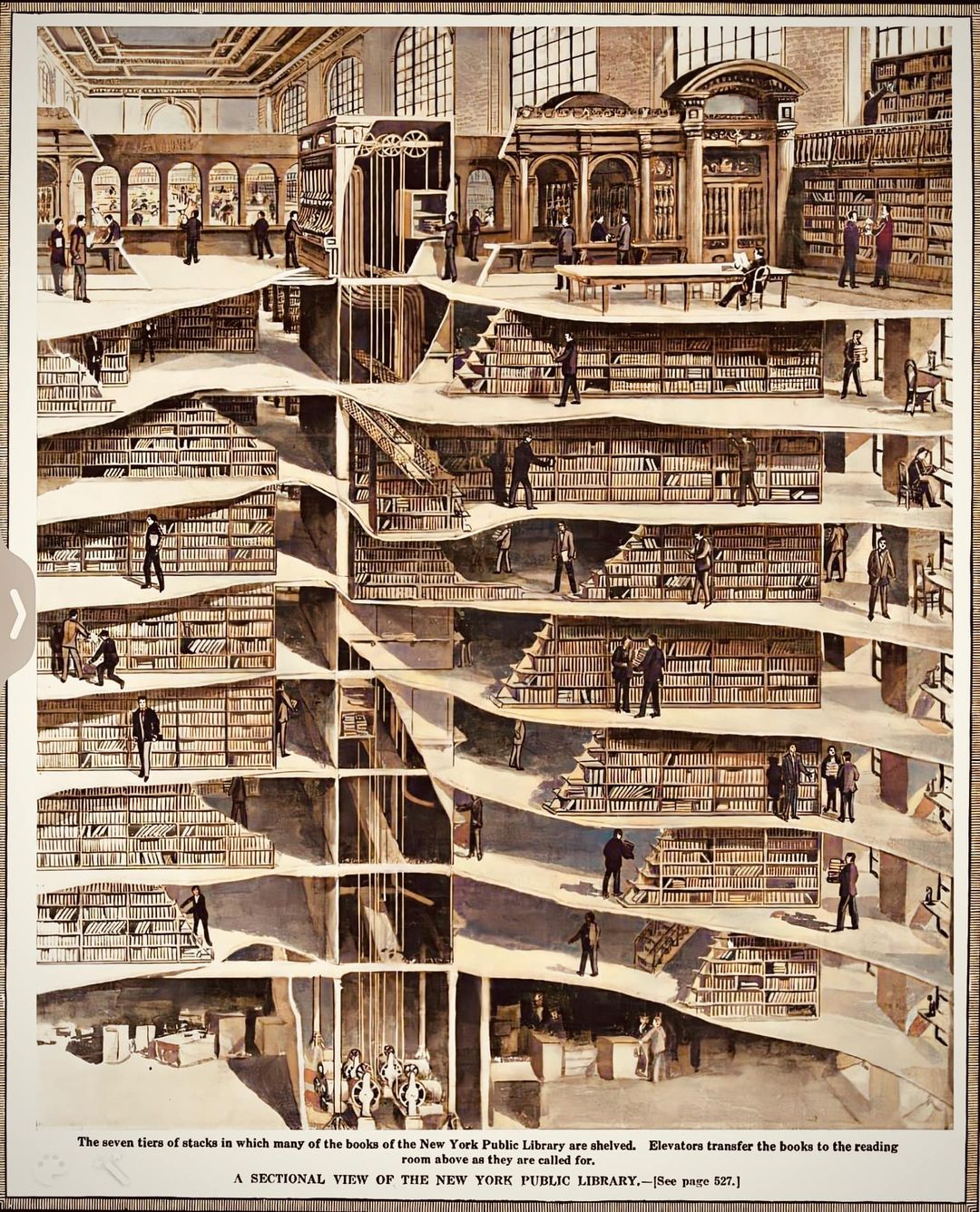
The New York Public Library main building opens in 1911
How the readers and the books are distributed in the new building.
Situated on the site of the old Croton Reservoir in Bryant Park, one of the most accessible locations in the city, the white marble structure looms magnificently into view as one travels down or up Fifth Avenue.
Designed in the modern Renaissance style, the building is 390 feet long, 270 feet deep, and is built around two interior courts, each about 80 feet square. The cost of removing the old Croton Reservoir, and of constructing the new building, was about nine million dollars.
The books are arranged in seven tiers of stacks, occupying the greater part of the rear of the building.
Contrary to the usual library practice, the main reading room is placed on the top floor at the rear, and immediately above the main stack room, with the result that better light and better ventilation are obtained.
The library, as it stands, has accommodations for about three million volumes, and over 1,700 readers. Its reading rooms are open to the public every day and every evening. The large reading room for the use of the general public has a seating capacity of 768.
After having filled out his order blank, the reader hands it to one of the reference librarians at the information desk - an enclosure which stands in the center of the room, and to which all order blanks must be referred.
The reference librarian takes the order slip, gives it a number, gives the reader a check bearing the same number, and finally instructs the reader to go to the north or south side of the delivery desk in the main reading room.
The order slip is shot through a pneumatic tube to the main reading room. The reader waits in front of an indicator. When his check number is flashed on the indicator his books are ready for him. The check is exchanged for the volumes that he has ordered.
In order to obtain the book ordered by the reader as quickly as possible, a very simple system of pneumatic tubes, lifts and conveyors has been installed. All told, there are eleven electric book lifts, of which only six need here be considered, since only they are directly concerned with the transferring of books from the stacks to the reading rooms.
One of these book lifts travels from the stack floor No. 1 to the main reading room at the north end. At the south end of the stack room another lift travels from stack floor No. 1 to the main reading room.
Each of these lifts can carry 250 pounds of books at the rate of 150 feet a minute, and each is so arranged electrically that the pressing of a push button at any landing will stop the car at that landing, or send it to any other landing, where it will stop automatically.
In addition to the lifts for raising and lowering books from the various stack floors to the reading room, two horizontal conveyors have been installed on the sixth stack tier, running at right angles to each other. One of these horizontal conveyors runs along the north side of the building; the other from the north end of the building to the center of the stack room.
The books can be transferred from the one horizontal conveyer to the other, and thence to one of the four electric lifts, which carry it to the reading room.
Each of these horizontal conveyers consists of an endless track, with an endless rope running above it attached to two cars or baskets on wheels.
Scientific American article excerpt, and illustration, May 27, 1911
